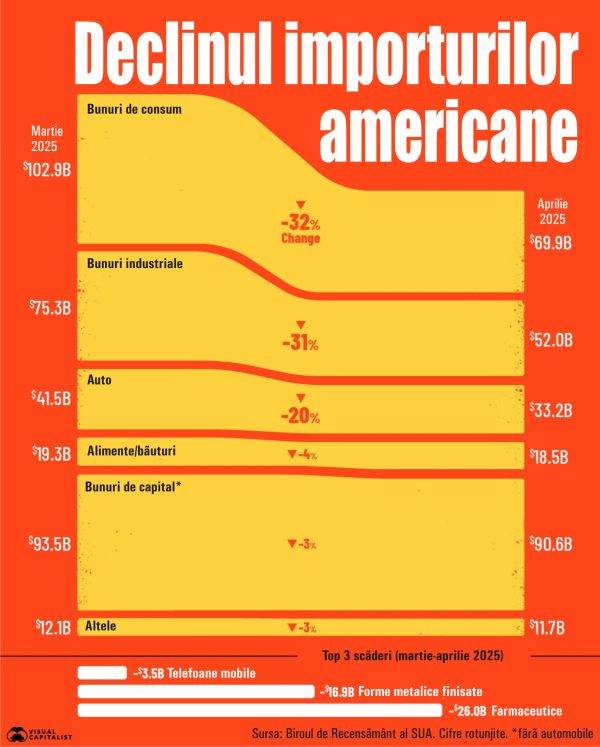The American economic landscape has been profoundly reshaped by an unprecedented event: a record 20% decline in goods imports during April 2025. This historic contraction, meticulously reported by visualcapitalist.com, marks the most significant single-month drop in the nation’s trade history, sending ripples throughout the US economy and demanding careful analysis of current economic data.
Such a precipitous fall in US imports immediately signals a substantial shift within the broader economic framework. It underscores either a significant recalibration of global supply chains or a pronounced cooling of domestic demand, impacting various sectors from manufacturing to retail. This dramatic market decline warrants immediate attention from analysts and policymakers alike, as it could signify deeper underlying changes in trade patterns.
Several factors could underpin this striking import trend. A primary consideration is a potential slowdown in consumer spending, possibly exacerbated by inflationary pressures that have eroded purchasing power. When consumers spend less, the demand for imported goods naturally diminishes, directly contributing to such a sharp downturn in international trade.
Beyond consumer behavior, changes in corporate inventory management or a global economic reorientation might also be at play. Businesses might be scaling back import orders due to existing high stock levels or anticipating a slower sales environment. This strategic shift in trade practices can significantly impact import volumes and reflect a cautious outlook within the US economy, highlighting evolving market dynamics.
The ramifications of this record decline are far-reaching, potentially reverberating throughout the US economy. Sectors heavily reliant on international trade, such as logistics and import-driven retail, face immediate challenges. Furthermore, sustained reductions in imports could influence employment figures, corporate earnings, and ultimately, the gross domestic product, painting a cautious outlook for the coming months and requiring careful interpretation of economic data.
Economists are now tasked with discerning whether this import contraction is a transient anomaly or indicative of a more persistent trend. Understanding the deep-seated factors contributing to this historic downturn is crucial for policy formulation and business strategy. This development underscores the inherent volatility in global trade and presents a critical juncture for assessing the resilience and future trajectory of the American economic model amidst ongoing global economic shifts.
Discover more from The Time News
Subscribe to get the latest posts sent to your email.






